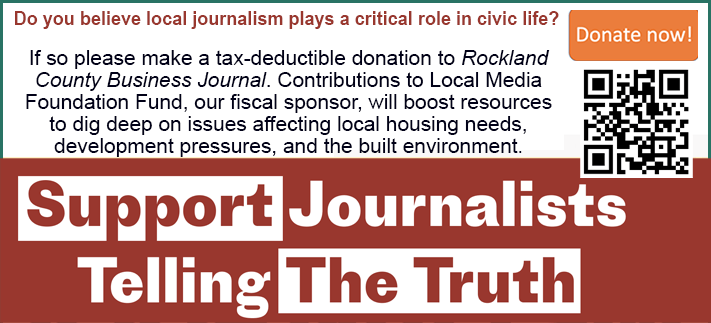|
RCBJ-Audible (Listen For Free)
|
NEWS
More than $50 billion in settlement funds from pharmaceutical companies that made and sold opioid painkillers will be paid out over the next 18 years to state and local governments across the country.
Though small in comparison to the Big Tobacco settlement in 1998, the tobacco payout has lessons for those who will shepherd the opioid monies for Rockland County, based on the experiences of the past three decades of tobacco payments.
Here in New York, Attorney General Letitia James has reached settlements totaling over $2.6 billion with companies involved in manufacturing, distributing, and selling opioids. These funds will be directed to New York communities for treatment, recovery, and prevention efforts. Efforts continue to settle with other players, and the availability of funds may increase.
Rockland County has either already received or is scheduled to receive funds from the Janssen settlement ($570,000), the Endo settlement ($215,000), Allergen ($616,000) and various distributors ($435,000).
As this new source of county revenue starts to flow, it makes sense to consider how the Big Tobacco settlement of the late-1990s was handled by Rockland County’s Tobacco Asset Securitization Corporations (TASCs), which were public authorities established to handle the funds.
Let’s turn back to the early aughts when New York and a handful of other states sued Big Tobacco and settled for annual payments in perpetuity from the tobacco companies. New York largely passed its settlement money to the counties, including Rockland, and rather than wait for funds to trickle in year after year, as some counties did, Rockland chose to capitalize or sell the income stream from the tobacco settlement into the bond market, enabling it to receive a large payout, all up front, less the costs of issuing the debt.
This September, the bond-rating company Moody’s rated the Rockland TASC 2001 bonds at near “junk” status.
“The county saw a way to unload its existing debt by using the proceeds of the Tobacco Settlement bonds,” said an anonymous source who was close to the transaction. “Very little of the money was used for tobacco cessation or education. It was used to clear existing debt off Rockland’s books.”
The county, through the independent public authorities (called the First Tobacco Asset Securitization Corporation and the Second Tobacco Asset Securitization Corporation), chose to shift the risk of decreasing tobacco settlement payments to investors while securing to present generations the benefit of future tobacco payments. That seemed a sound idea at the time, but now there are questions over how the bond debt will be serviced and the bonds paid off.
In 2003, the Second Tobacco Asset Securitization Corporation, set up by Rockland County to capitalize the income that was not pledged in the first TASC. That entity, chaired by former County Executive Scott Vanderhoff, paid off its bonds early. The entity is winding up, and the funds that remain in that corporation, about $125,000, will be turned over to the county’s general fund.
At issue is whether revenue from declining cigarette sales will be sufficient to maintain the obligations under the bonds. Furthermore, if not – and RCBJ could not from sources it spoke to ascertain whether this has been considered – what will become of the growing debt that stands at $90 million according to the TASC’s most recent audit?
By design, entities like Rockland’s Tobacco Asset Securitization Corporation, an “independent” public authority, was created to put a buffer between the bonds and the county. It is an independent body, headed up by Howard Phillips as Chairman and Director, whose finances are separate from the county’s finances.
Howard Phillips is also the Supervisor of the Town of Haverstraw, the Chairman of Rockland Green (former Solid Waste Management Authority), Chairman of the Joint Regional Sewerage Authority. He earns $3,000 annually for his spot on the Tobacco public authority. All of the board members are compensated for their participation.
In 2001, the Rockland TASC, sold settlement bonds for about $46.7 million. The bonds mature in 2043 and carry an interest charge of between 4.625 percent and 5.75 percent. Then again in 2005, the TASC sold several tranches of “Turbo Capital Appreciation Bonds” or CABs totaling another $24.5 million, which are really long-term debt obligations where interest payments are optional, and if not paid, the interest, and then the interest on the interest, accumulates until the bonds have to be paid off in 2045, 2050, and 2060.
Seems like ages from now but good governance requires a long contemplative outlook and planning.
About 20 years after being issued, and with 20 years of tobacco payments going to principal and interest, the balances due on the bonds (as of the 12/31/2022 audit) were $23.38 million on the settlement bonds, and $75.5 million on the Turbo CABs – almost $100 million dollars between the two.
The other problem is that even though the payments from Big Tobacco are adjusted for inflation, they are also adjusted for declines in cigarettes sold. Each year, cigarette sales decline about 3 percent and according to Moody’s, future declines could rise to 5 percent to 8 percent annually.
This September, the bond-rating company Moody’s rated the Rockland TASC 2001 bonds at near “junk” status.
Let’s Do The Math
One need not be a math genius to calculate there simply will not be enough money from the tobacco settlement to service and pay off the bonds. The benefits secured to the present generation will encumber the future generation with debt that is unlikely to be satisfied and discharged — except through default, or through a pledge of whatever remaining tobacco money the County may receive going to bondholders.
The county may not be obligated to pay off the bonds because the only security issued to the bondholders was an assignment of the Tobacco settlement funds. However, this firewall between the bond holders and the County has not been tested in court. The county was the originator of the funds, used the bond proceeds to pay off its debt, and may continue to collect whatever tobacco funds remain after the default.
As far back as 2014, then head of the New York Authorities Budget Office David Kadera opined, “I think it’s an open question as to what obligations the courts would ultimately find [the Counties] having here, even though they did not issue the debt.”
The reckoning may be years away, but a recognition of the problem is both a first step and a lesson for whomever handles the funds due the county from the opioid settlements.














